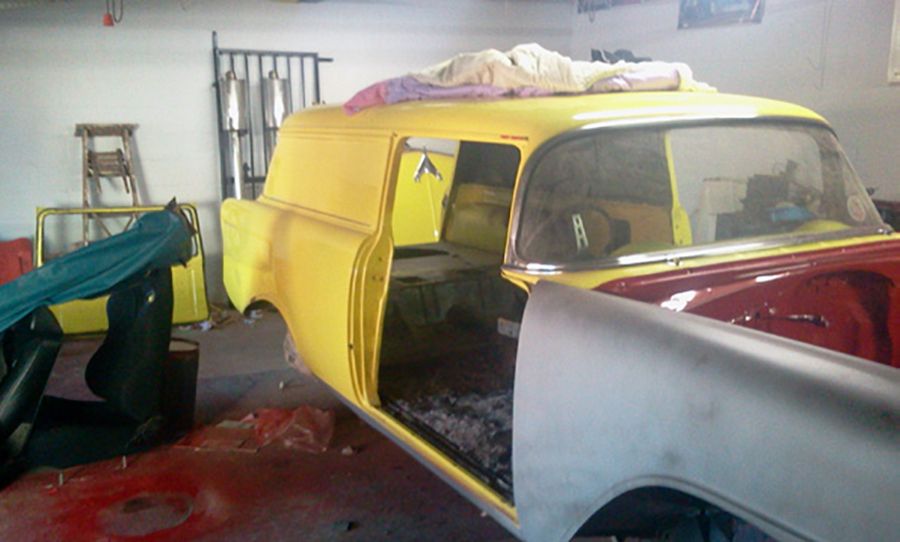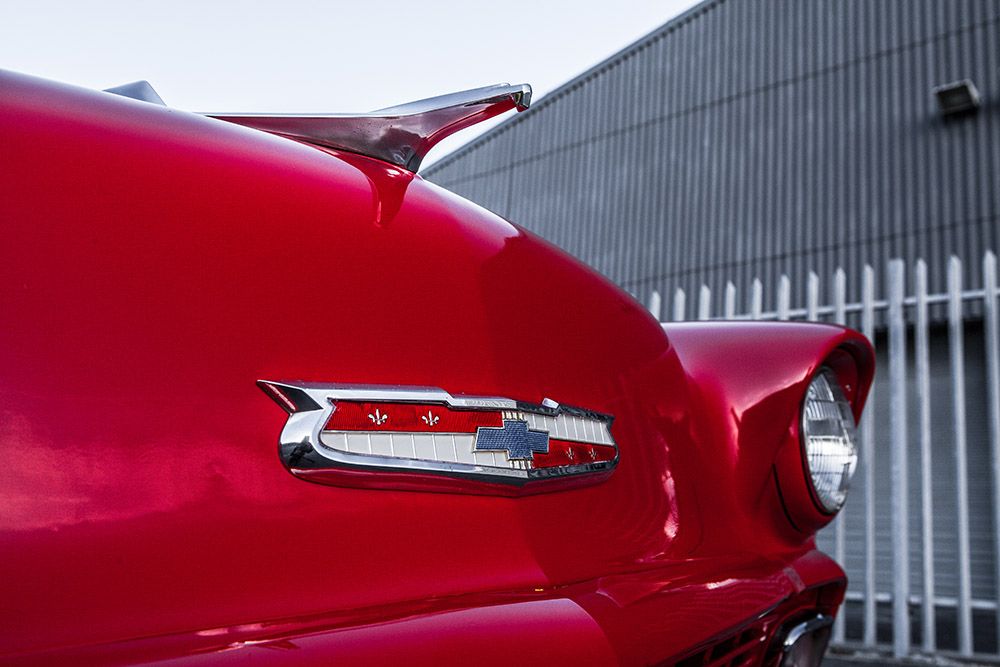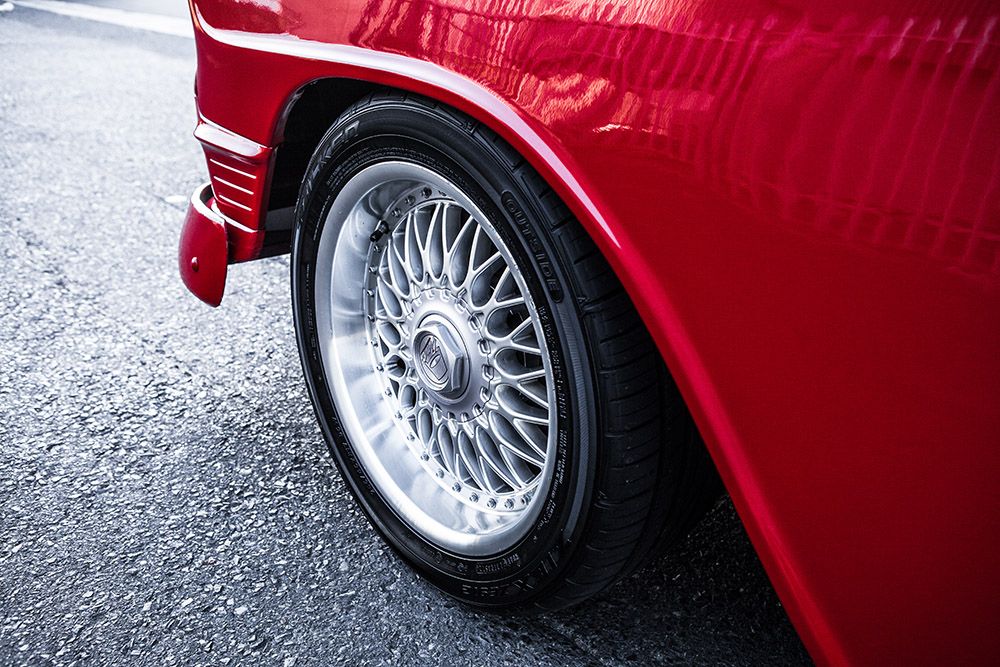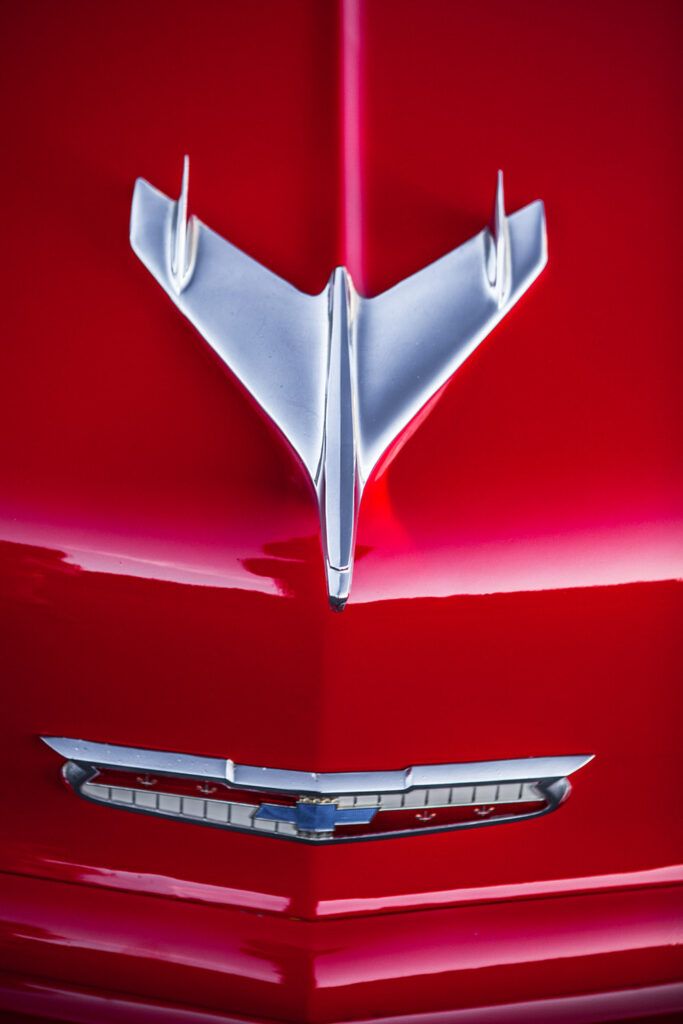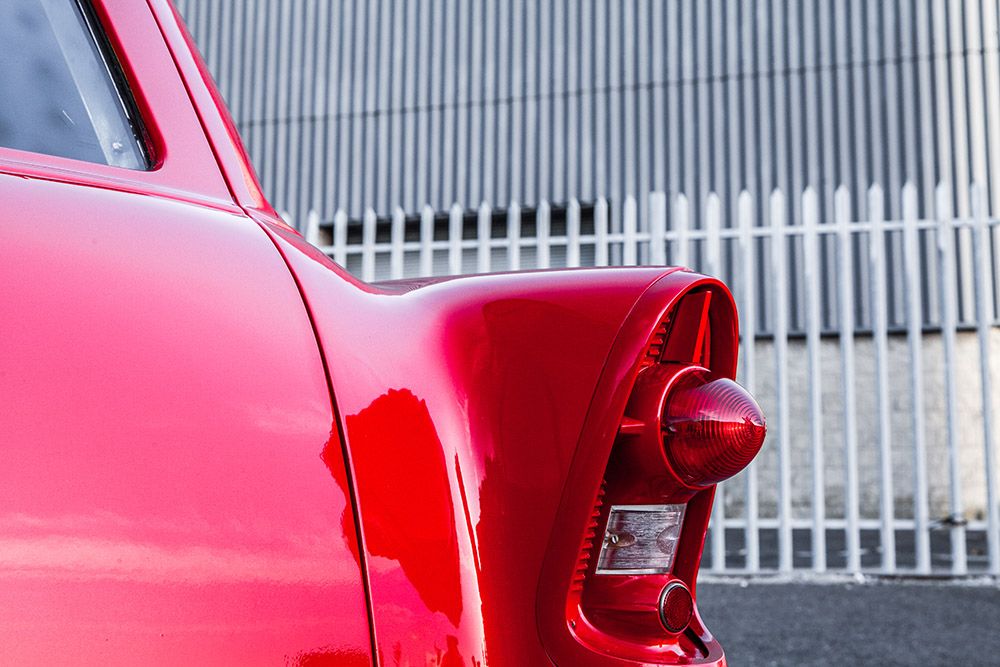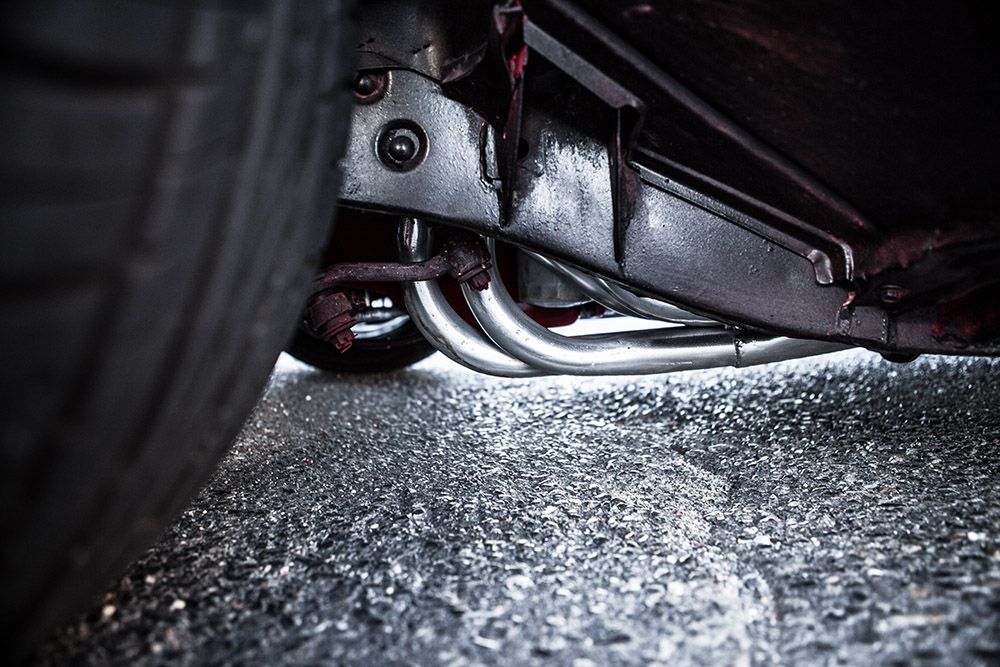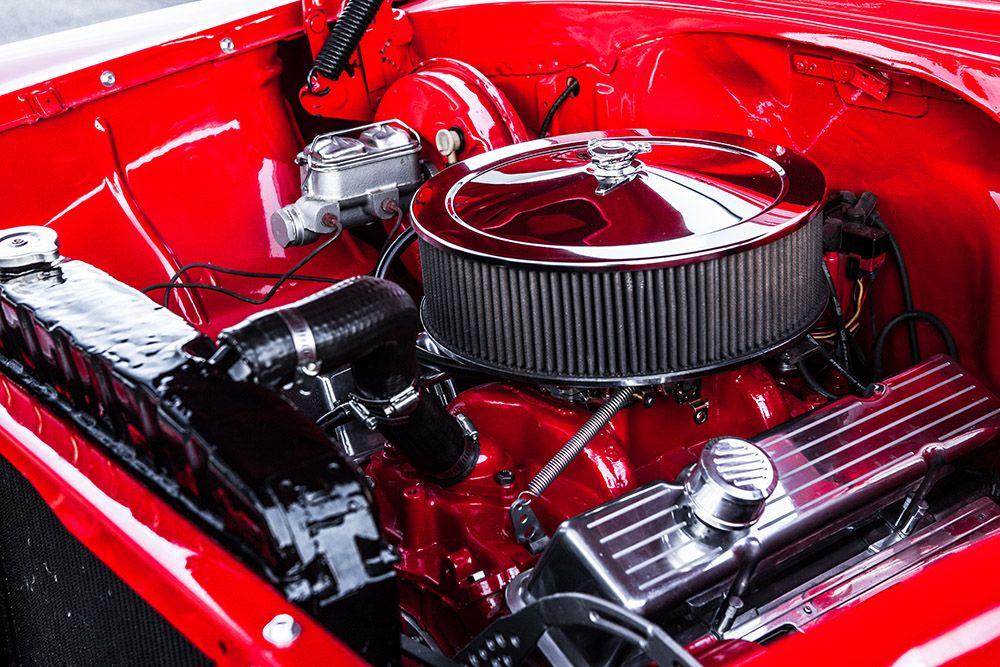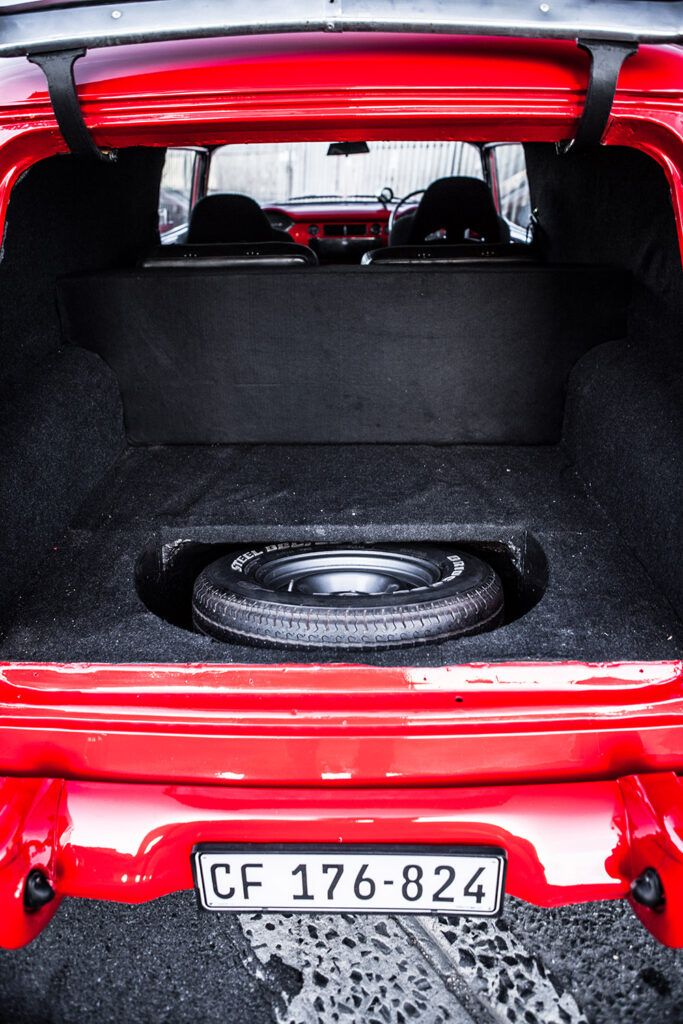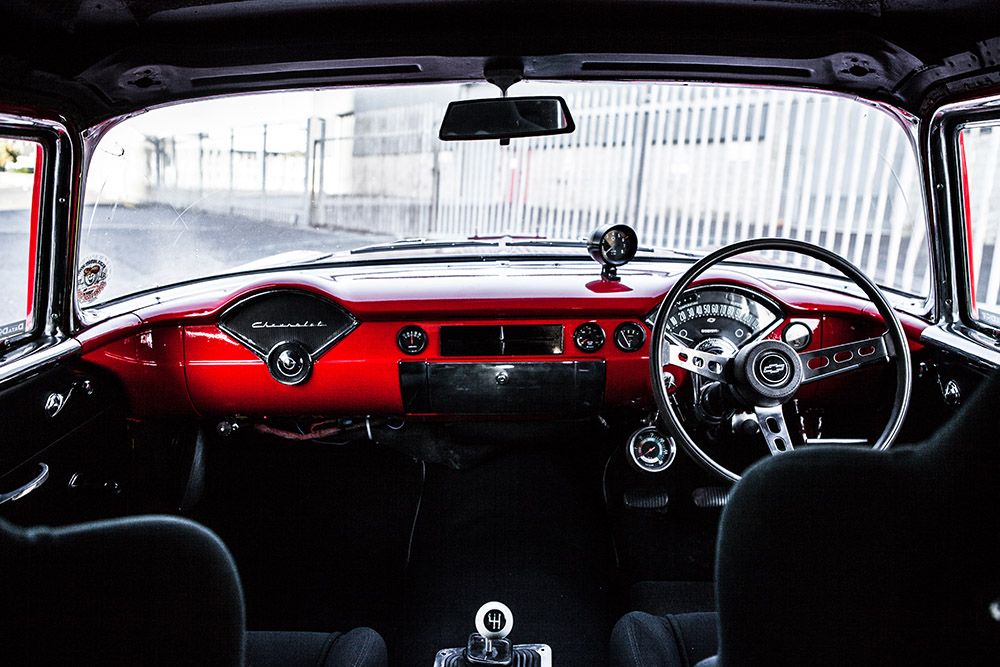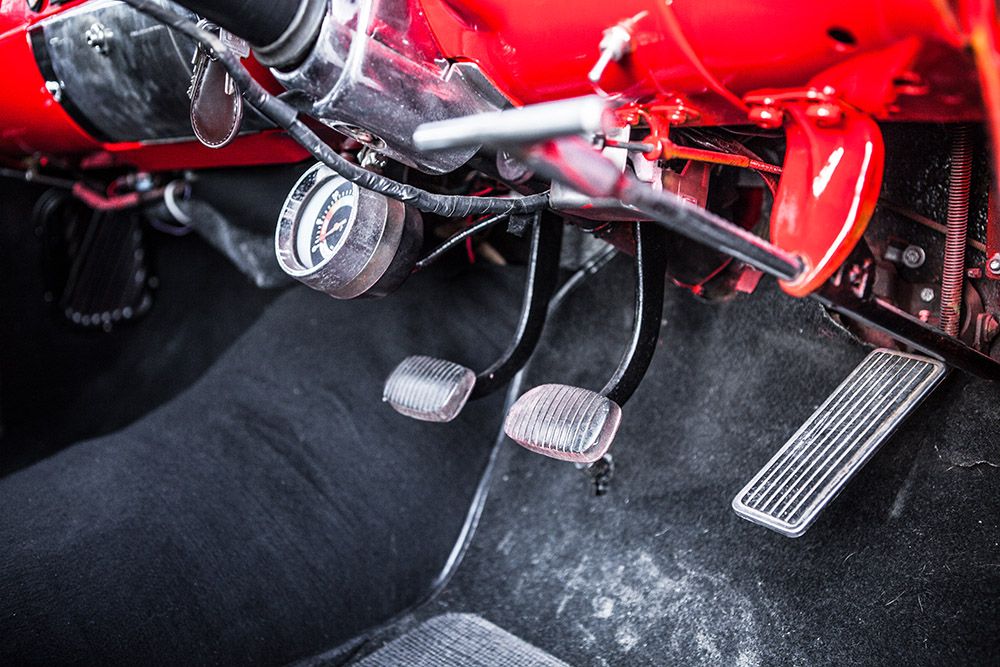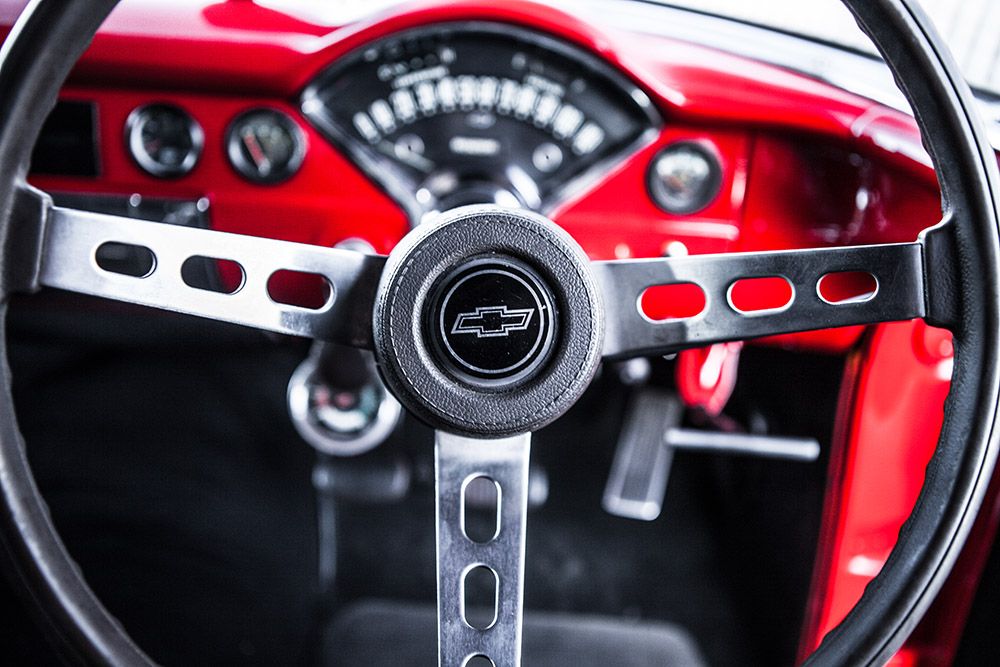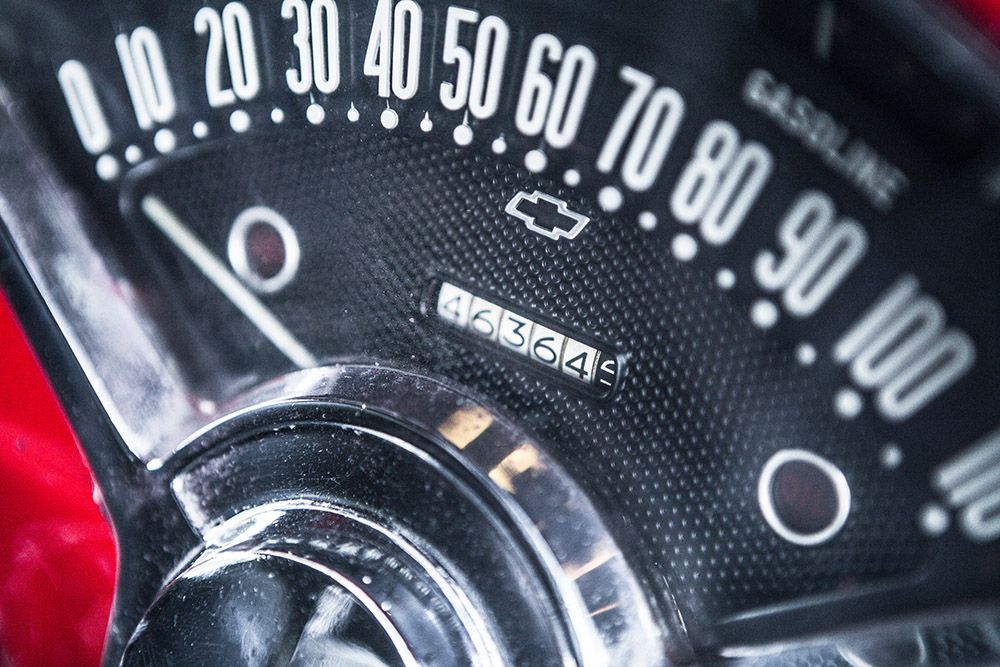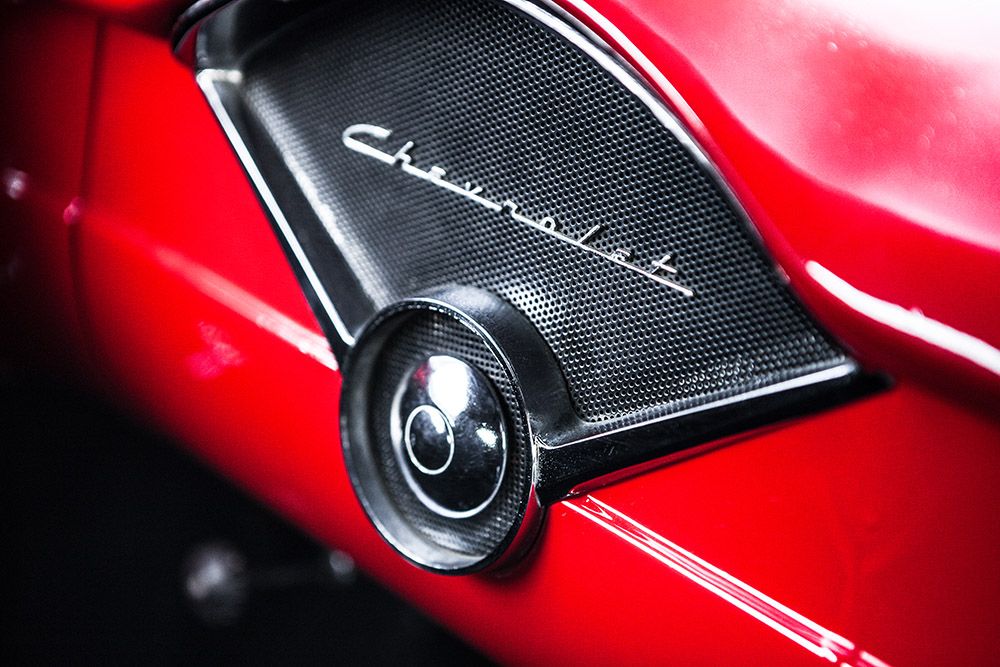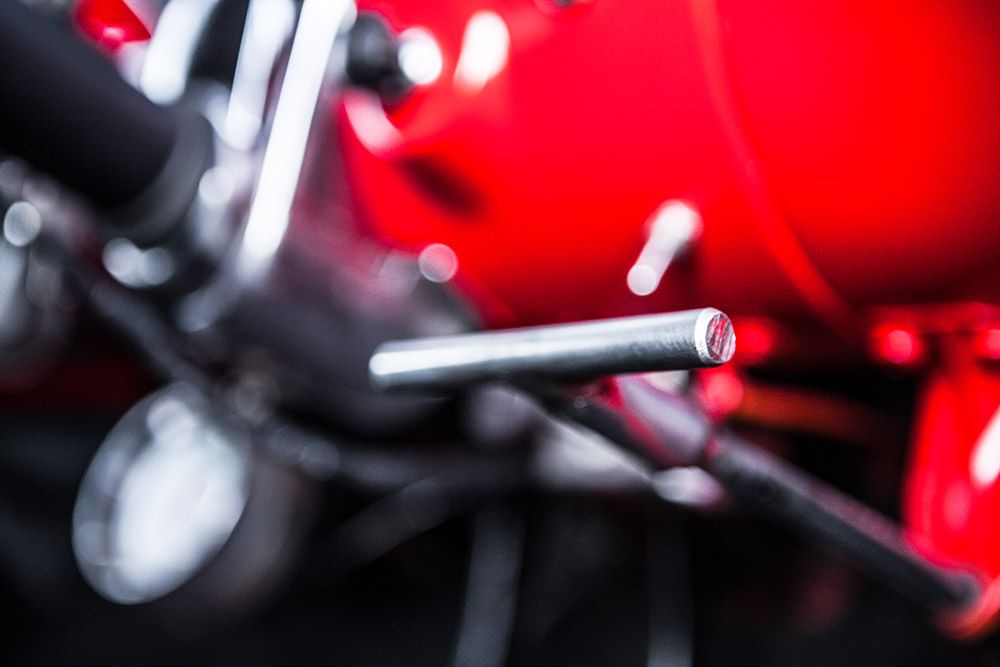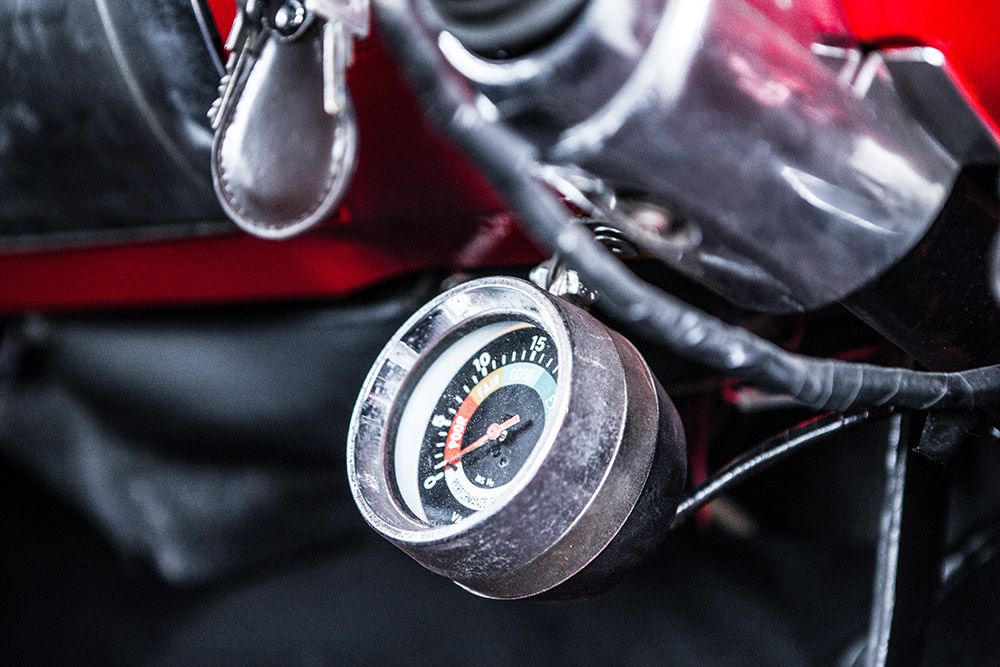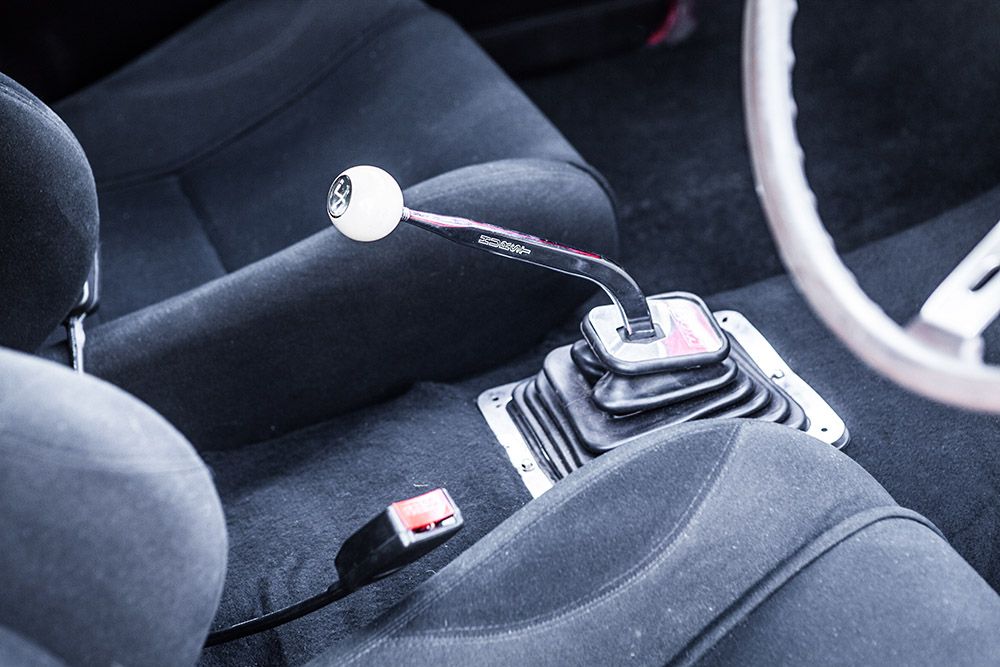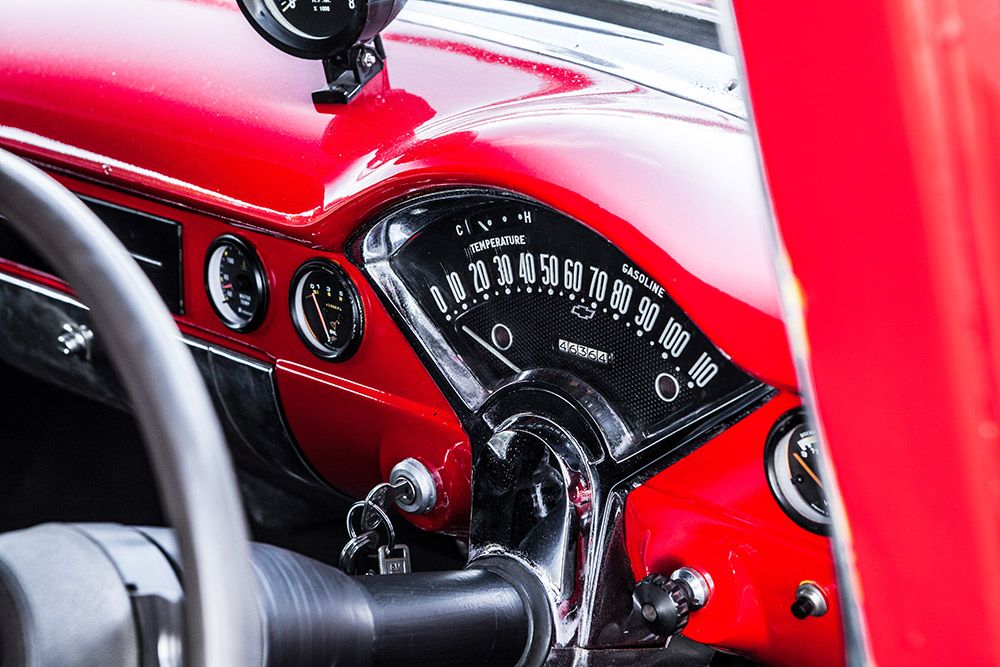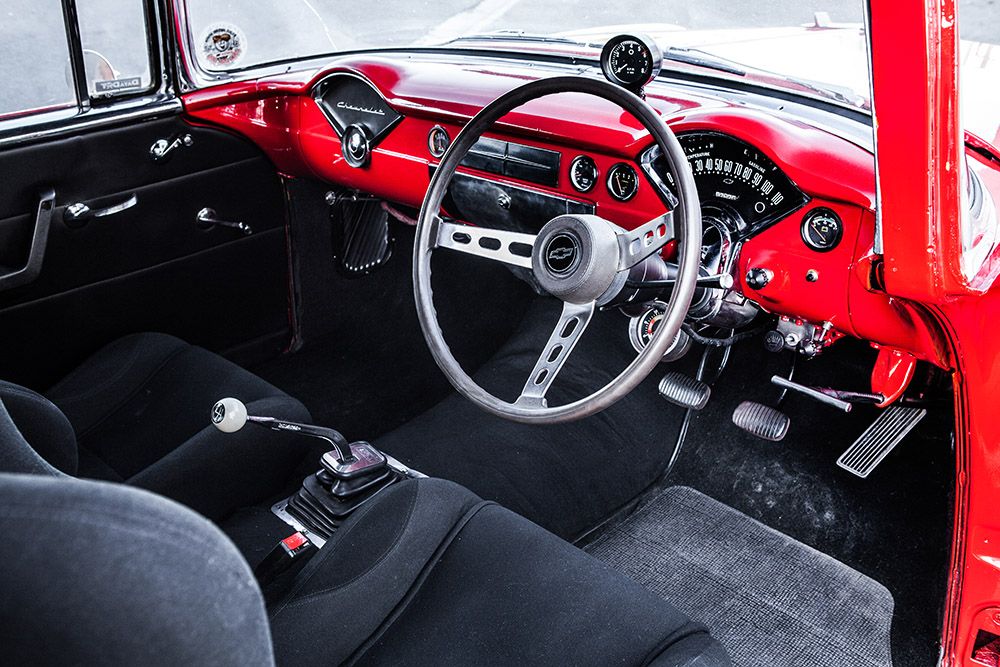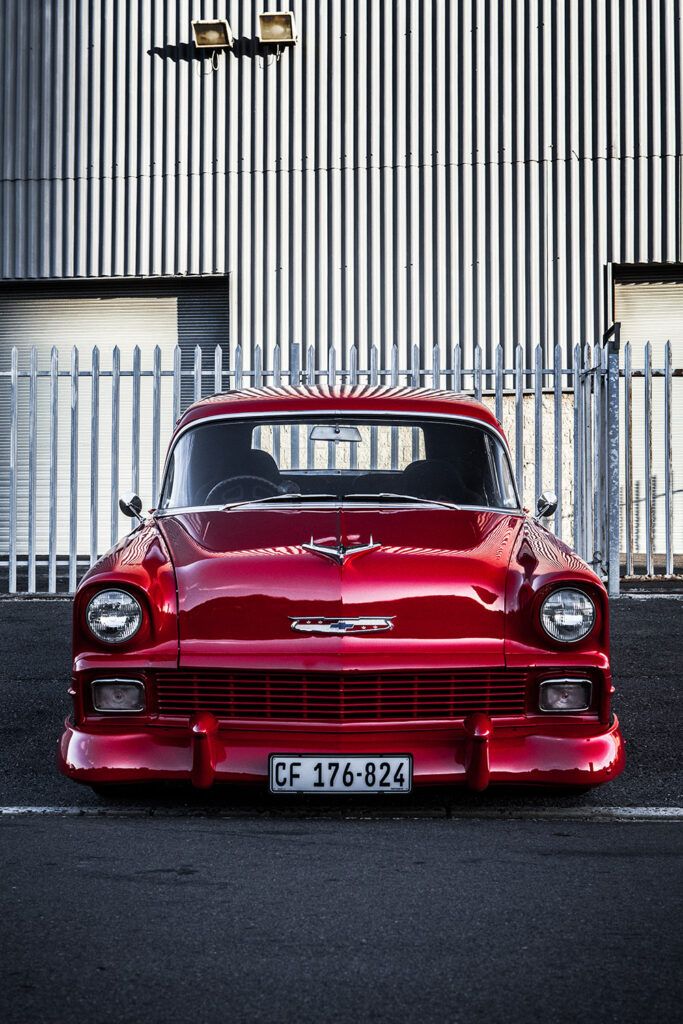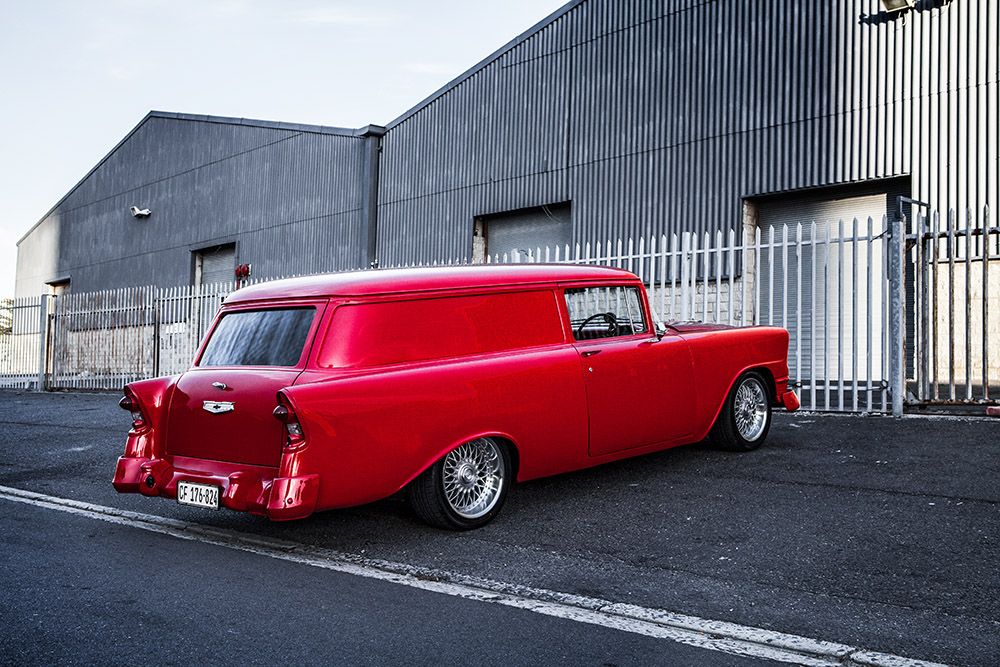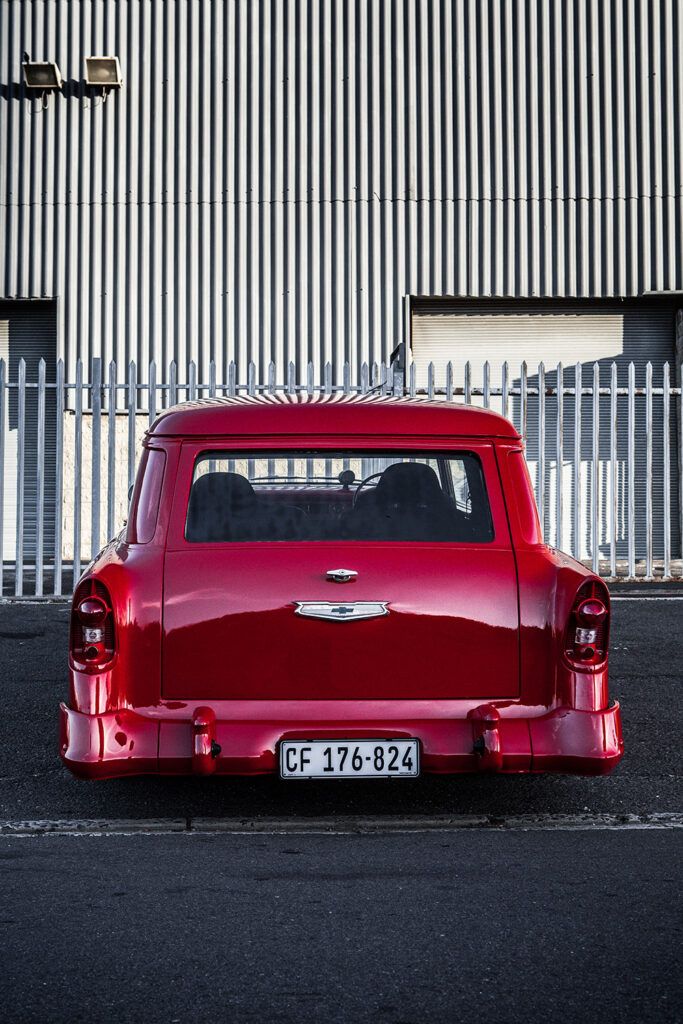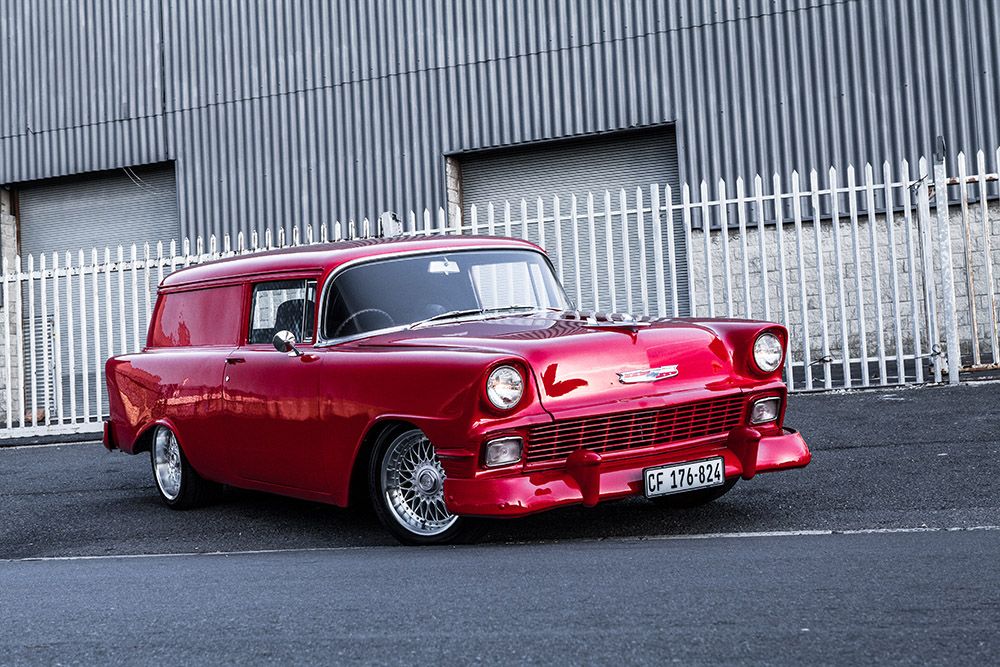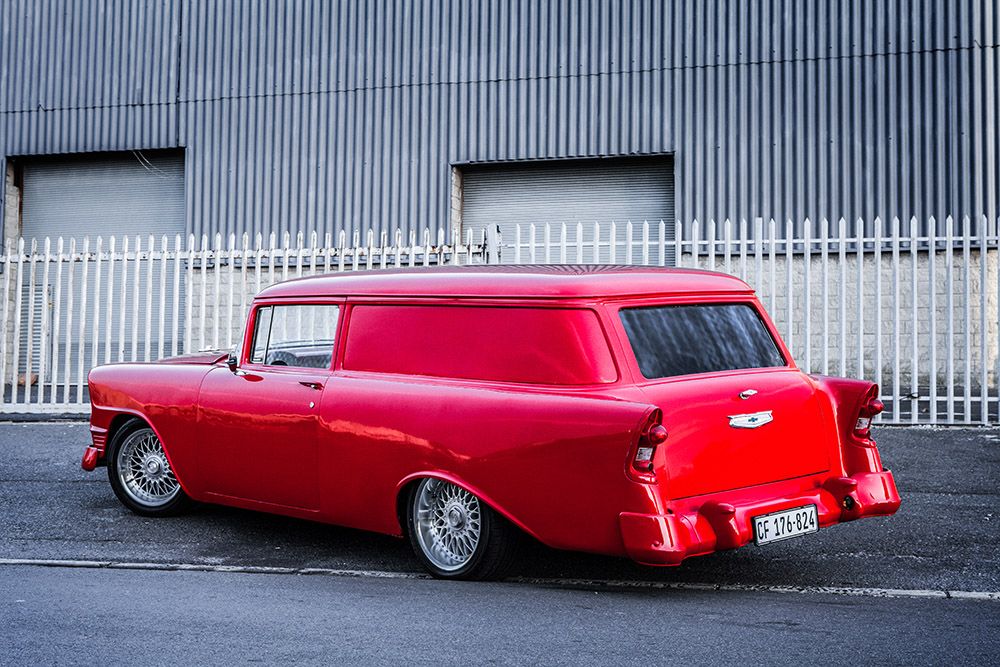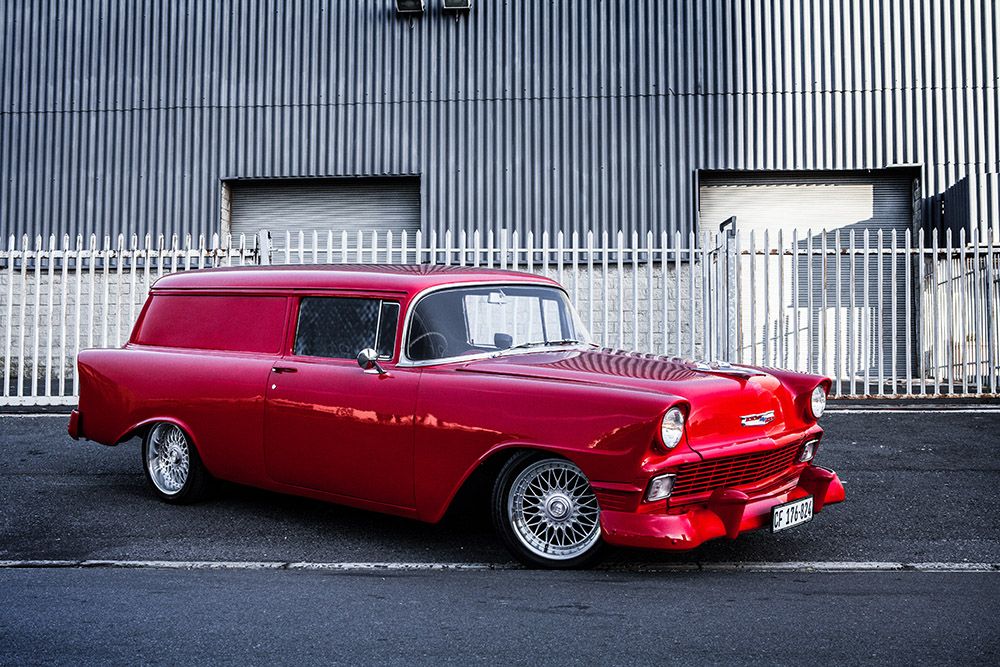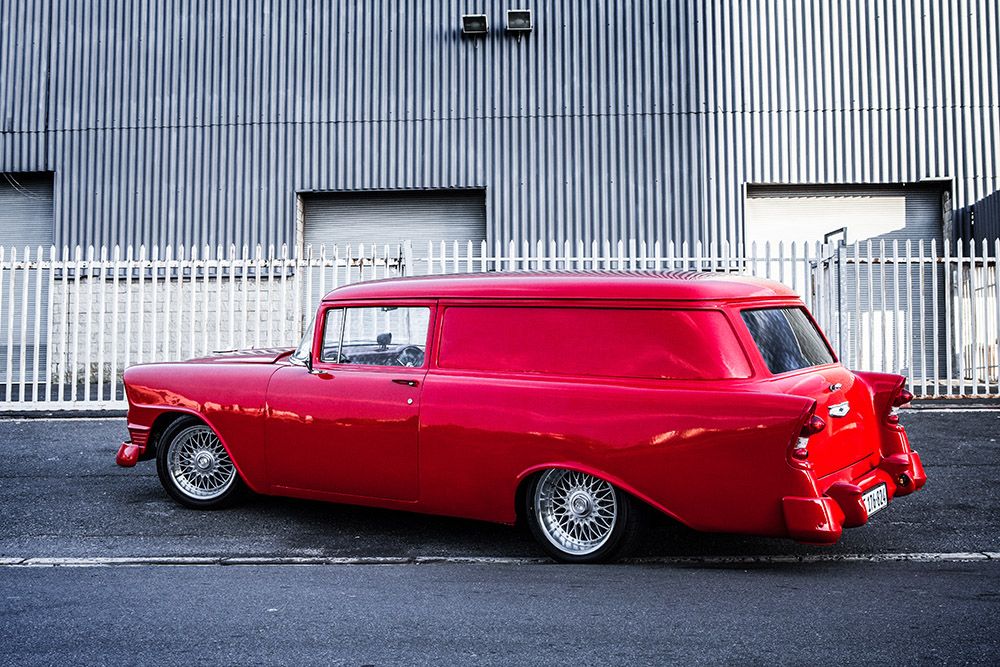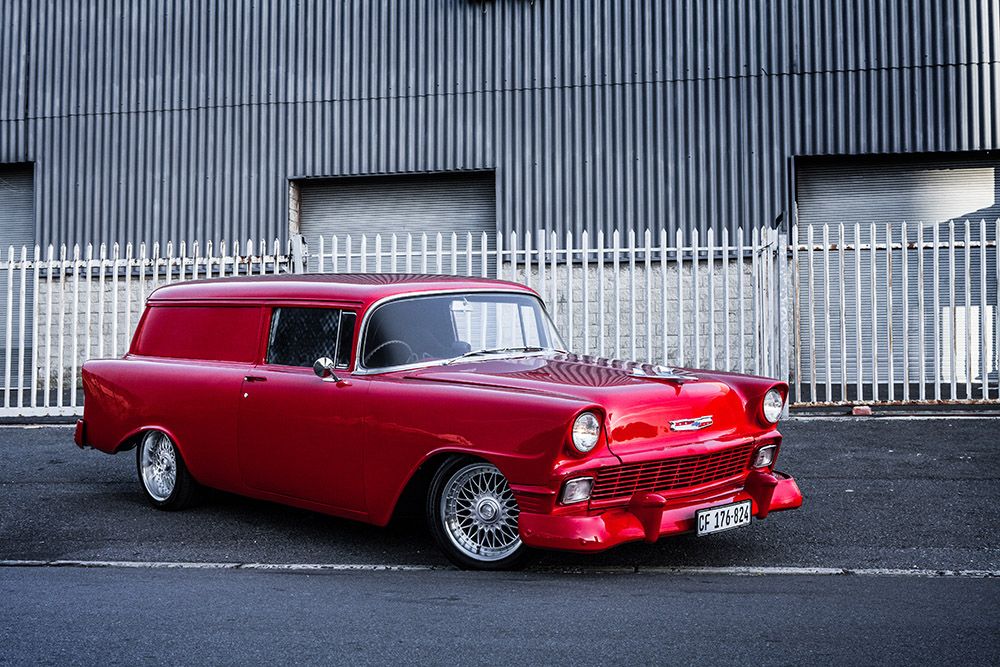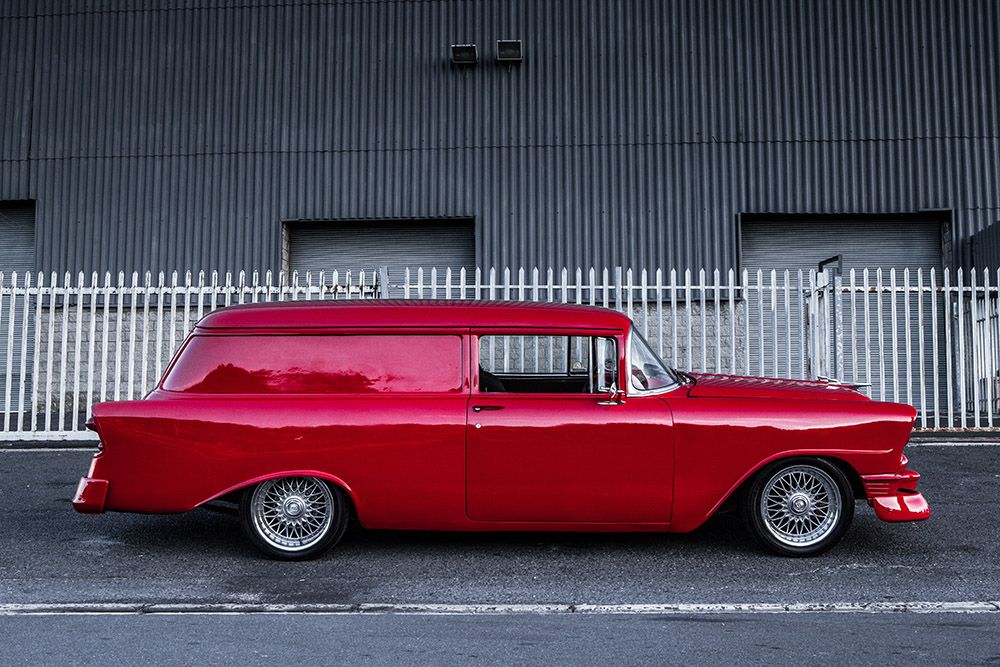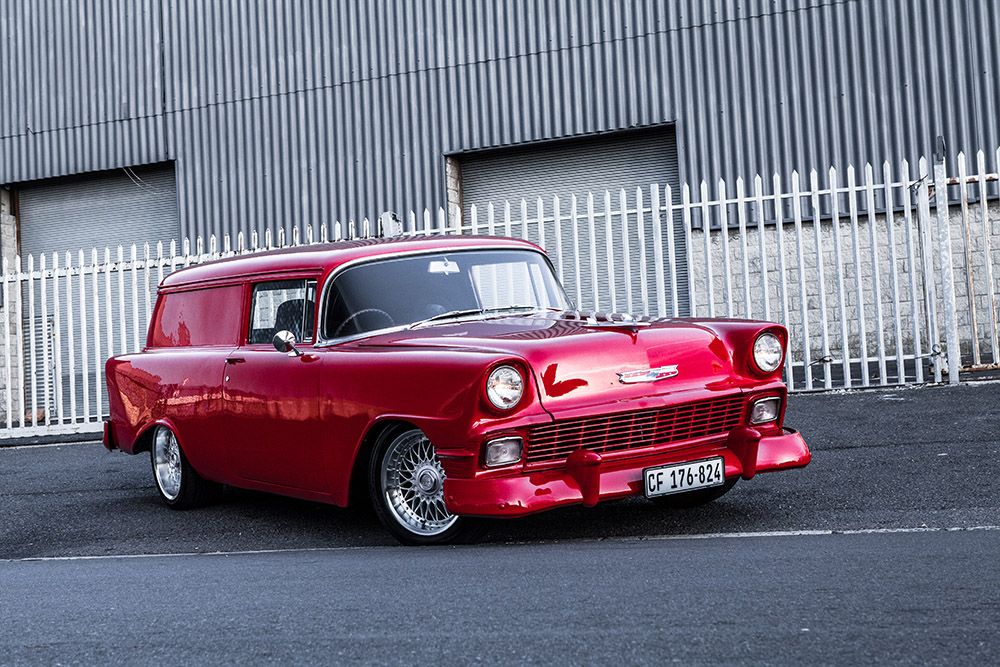
When Jackie Swart finally got his hands on this long, low-slung 1956 Chevrolet Handyman Delivery 210, it was the colour of a fluorescent canary. But beneath the garish paint job was a body in superb condition – a rarity in itself for a vehicle of this age and kind.
Words: Karl Eriksen | Photos: Antigrafika
Jackie had been after the car for fifteen years. The previous owner, a friend’s father, would fix it up, drive it for a while, park it for a few years, then repeat the process. Eventually, Jackie wore him down. The sale finally happened, and the journey to resurrecting this American classic properly began.
The biggest initial hurdle wasn’t mechanical — it was legal. The car had no papers, and the VIN number had been removed during a respray. When Jackie tried to register it, he was told if the number couldn’t be matched in the system, the car might be crushed. Thankfully, after some determination and paperwork wrestling, he managed to get everything above board and the project could begin in earnest.
The chrome had seen better days and had been painted silver, which didn’t sit well with Jackie or his wife. They both agreed: this car had to be red. That fiery colour now covers the body and fenders, while smaller trim pieces were kept original to break up the tone. Side mirrors and windscreen wipers were imported from Danchuk to stay true to the vehicle’s heritage.
Anyone who’s worked on one of these knows they’re heavy — and this one is no exception. During the respray, a two-ton jack was needed just to lift the doors. Jackie himself nearly dislocated his shoulder opening the passenger side. When he got the car, there was no exhaust system, so he fitted two 76mm seamless pipes, free-flow boxes, and a pair of drop-downs just before the diff. A four-speed Toploader gearbox was installed, along with a new prop shaft. Though it works well, Jackie admits driving it in traffic is a bit of a mission, and he might swap it out for an automatic down the line.
The Chevy 327 small block was removed, cleaned up, painted to match the body, and topped with a new Holley carb. The braking system got a serious upgrade too — now using components from a Chevrolet de Ville. The front has disc brakes, while the rears are drums, all fully overhauled.
Jackie spent time cleaning up the engine bay, even relocating the battery to the rear to create a more open, cleaner look under the hood. Originally, the car sat high, almost like a 4x4, so he dropped the suspension by 50mm — cutting the front coils and adding blocks at the back.
Inside, the load area had an old, incomplete contraption that was removed to make way for comfort. Front seats from a de Ville were moved to the back for the kids, while Jackie repurposed reclining seats from his old race car for the front. The gauges remain mostly original, though he’s added an oil pressure and temperature gauge. A temporary speaker carpet fills the back, and he’s still deciding how to finish it off properly. The blue roof lining it came with is gone, and he’s considering using Masonite and upholstery instead of the standard trim.
At some point, someone had welded in side panels using bakkie canopy windows. While sanding for paint prep, Jackie found the work had been done so well, he’s not concerned about cracks forming — always a worry when metal has been stitched in. The petrol cap location often surprises people — hidden behind the left rear light cluster, which swings open on a hinge. Jackie has a running joke with fuel attendants: he offers R50 if they can find it. He hasn’t had to pay out yet.
With the build finished only recently, it hasn’t gone on long road trips just yet, aside from a cruise to Hout Bay and another to Blouberg. Jackie believes there are only three or four Chevrolet Handyman Delivery models left in South Africa, making this build something truly special.
When asked what he plans to do with it, Jackie admits he tends to sell cars once the thrill of building them is over. For a moment, that sounded like good news… until he reminded us that the price he’d ask now is nowhere near what he paid back then. As it should be. This isn’t just a build — it’s a rare piece of American muscle carefully brought back to life on South African soil.

